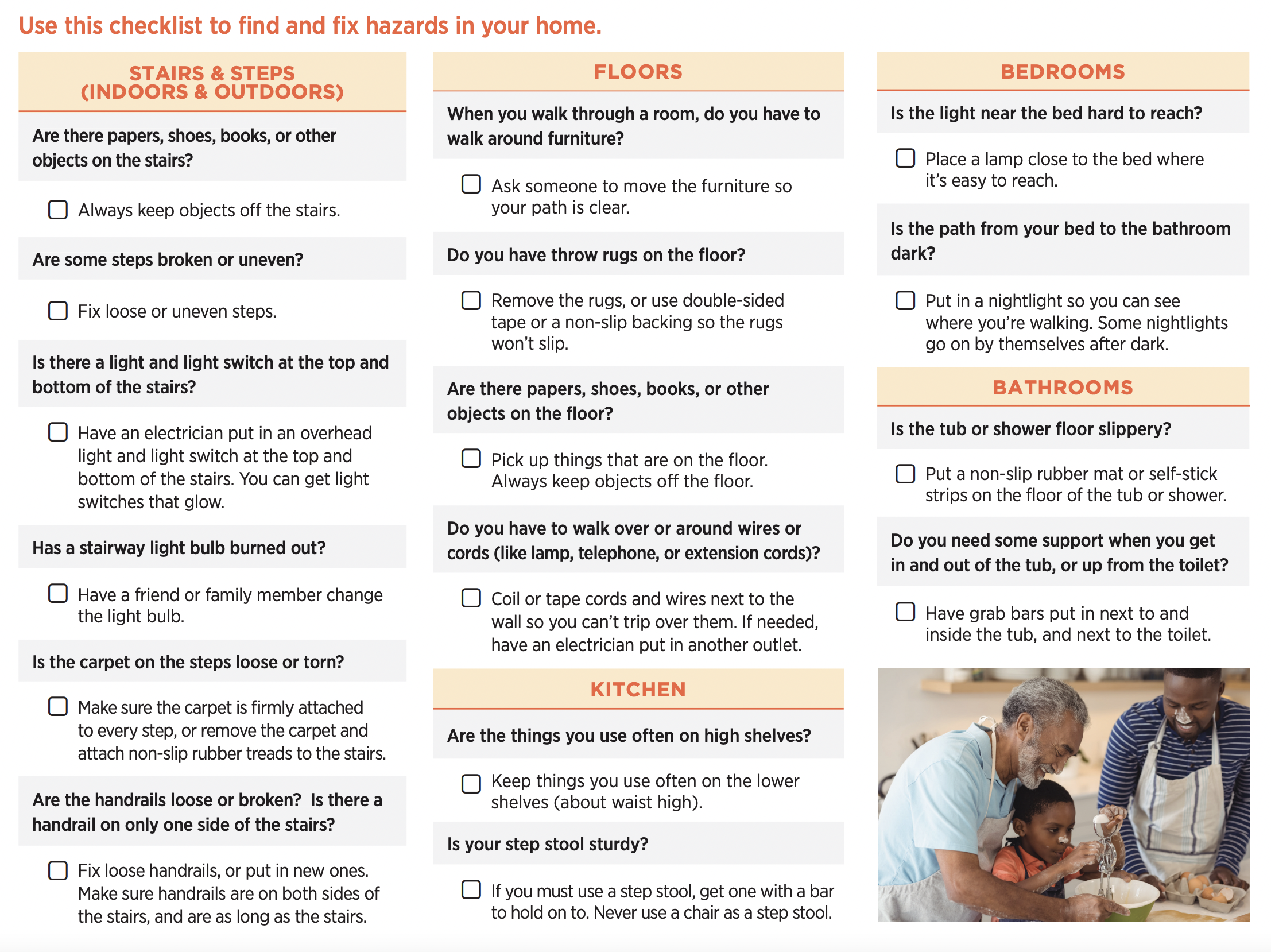All About Dementia Fall Risk
Table of Contents3 Easy Facts About Dementia Fall Risk DescribedThe 6-Minute Rule for Dementia Fall RiskDementia Fall Risk Can Be Fun For EveryoneThe 9-Minute Rule for Dementia Fall Risk
An autumn danger assessment checks to see how likely it is that you will certainly drop. It is primarily done for older grownups. The analysis generally includes: This consists of a series of questions concerning your overall health and wellness and if you've had previous drops or problems with balance, standing, and/or strolling. These devices examine your toughness, equilibrium, and gait (the method you stroll).STEADI includes testing, examining, and treatment. Interventions are referrals that might decrease your threat of falling. STEADI consists of 3 steps: you for your threat of dropping for your threat aspects that can be boosted to try to stop drops (for example, balance troubles, damaged vision) to reduce your risk of falling by making use of efficient techniques (as an example, giving education and resources), you may be asked numerous questions consisting of: Have you dropped in the past year? Do you really feel unstable when standing or walking? Are you bothered with dropping?, your copyright will check your stamina, equilibrium, and stride, using the complying with autumn evaluation tools: This examination checks your stride.
You'll sit down once more. Your copyright will examine how much time it takes you to do this. If it takes you 12 seconds or even more, it may suggest you are at greater threat for a fall. This test checks stamina and equilibrium. You'll rest in a chair with your arms went across over your upper body.
Move one foot midway ahead, so the instep is touching the big toe of your various other foot. Relocate one foot fully in front of the other, so the toes are touching the heel of your other foot.
Dementia Fall Risk Can Be Fun For Everyone
Most drops happen as a result of multiple contributing aspects; therefore, handling the risk of falling starts with recognizing the factors that contribute to drop threat - Dementia Fall Risk. Some of one of the most relevant threat factors consist of: Background of previous fallsChronic medical conditionsAcute illnessImpaired gait and equilibrium, lower extremity weaknessCognitive impairmentChanges in visionCertain risky drugs and polypharmacyEnvironmental elements can also increase the risk for falls, including: Poor lightingUneven or harmed flooringWet or slippery floorsMissing or harmed hand rails and order barsDamaged or incorrectly fitted tools, such as beds, wheelchairs, or walkersImproper use of assistive devicesInadequate supervision of individuals staying in the NF, including those that show aggressive behaviorsA effective loss threat administration program needs an extensive scientific evaluation, with input from all members of the interdisciplinary team

The treatment plan need to likewise include treatments that are system-based, such as those that advertise a safe setting (proper illumination, handrails, get hold of bars, etc). The performance of the treatments must be evaluated regularly, and the care plan changed as needed to reflect adjustments in the fall danger assessment. Carrying out a fall threat administration system making use of evidence-based best method can minimize the frequency of falls in the NF, while limiting the capacity for fall-related injuries.
Some Known Facts About Dementia Fall Risk.
The AGS/BGS standard advises screening all adults aged 65 years and older for autumn threat every year. This testing discover this contains asking people whether they have fallen 2 or even more times in the past year or looked for clinical interest for a loss, or, if they have not dropped, whether they feel unsteady when walking.
People who have dropped when without injury needs to have their equilibrium and gait examined; those with stride or balance abnormalities ought to obtain added analysis. A background of 1 fall without injury and without stride or equilibrium problems does not call for more analysis past ongoing annual fall risk screening. Dementia Fall Risk. A fall danger assessment is called for as component of the Welcome to Medicare evaluation

Get This Report about Dementia Fall Risk
Documenting a drops history is one of the top quality signs for loss avoidance and management. A crucial component of threat evaluation is a medication testimonial. A number of classes of drugs enhance loss danger (Table 2). copyright drugs in specific are independent forecasters of falls. These medicines tend to be sedating, change the sensorium, and impair equilibrium and stride.
Postural hypotension can usually be relieved by minimizing the dosage of blood pressurelowering medicines and/or stopping medicines that have orthostatic hypotension as a negative effects. Use above-the-knee support tube and sleeping with the head of the bed raised might additionally decrease postural reductions in blood stress. The suggested aspects of a fall-focused health examination are received Box 1.

A Pull time higher click here for info than or equal to 12 secs suggests high loss threat. Being unable to stand up from a chair of knee height without utilizing one's arms suggests enhanced autumn threat.